Project Ara Looks Less Like Vaporware, Launches Spiral 2 Hardware
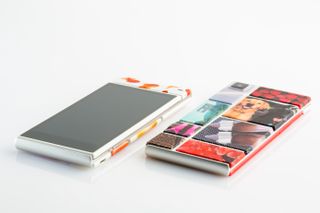
The idea of a modular smartphone is a tantalizing one, especially for PC enthusiasts who want a powerful smartphone but are accustomed to having the flexibility to choose each component of a build. Google's Project Ara (and other projects such as the Puzzlephone and Vsenn) promise that flexibility, but frankly, the whole prospect has seemed like a pipedream. Until now.
Progress
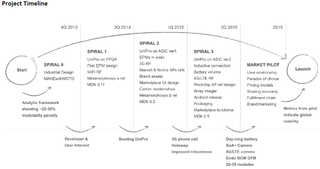
Google opened its second Project Ara Developers Conference today with the announcement that we'll see a "Market Pilot" later this year, as well as a full official product launch late in 2015.
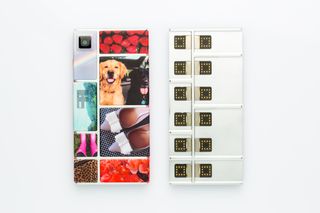
There are some key new features in the latest phone prototype, as well as 11 prototype modules that devs can use as reference designs for their own creations (although the team has set a goal of 20-30 modules across 10 categories for later this year). The latest MDK, version 0.20, has now been released.
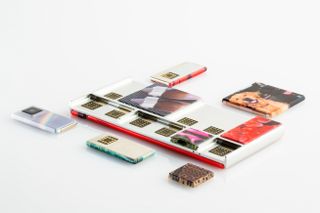
There have been some major changes between the Spiral 1 prototype in 2014 and the current Spiral 2 prototype. The main one, arguably, is the switch from FPGA to ASIC for the UniPro switch, which the team said will facilitate better performance between modules. UniPro is a spec published by the MIPI alliance, and it's Project Ara's chosen means of allowing its modules to communicate with the endo (the frame of the phone).
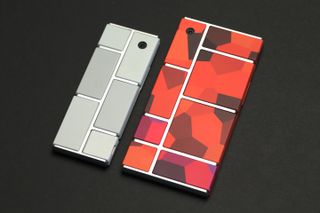
In a nutshell, UniPro is a layered protocol that allows devices and components to communicate easily. It can handle all sorts of communication, including application processing, data, modems, streaming packets and so on. It's designed for mobile devices and is thus ideal for the sort of paradigm a modular smartphone presents, where you have all manner of modules interacting through a central skeleton.
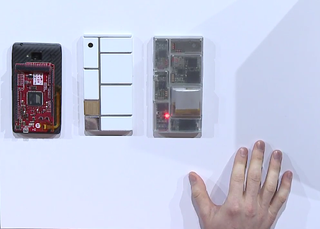
Other changes the team has made include taking the electropermanent magnets, which hold the modules to the endo, out of the modules themselves and fitting them into the endo. There's also now support for 3G modems, and the endo has an analog RF bus that allows more than one module to connect to a single modem. This simplifies things a bit by ensuring that you only need one modem even when there are multiple antennas connected to the endo.
Last and least, the plastic module shells can now be made with high-res, full color, injection-molded polycarbonate material.
Stay on the Cutting Edge
Join the experts who read Tom's Hardware for the inside track on enthusiast PC tech news — and have for over 25 years. We'll send breaking news and in-depth reviews of CPUs, GPUs, AI, maker hardware and more straight to your inbox.
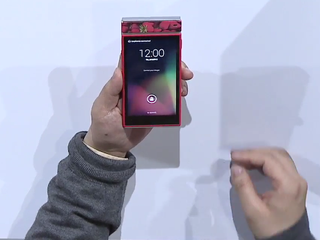
The team has also made progress on the UI of its marketplace. Pretty UI does not a functioning marketplace make, but hey, progress is progress.
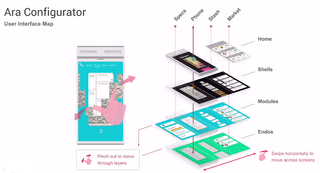
There are multiple components to the configuration process. There's the Specs portion, the Phone, the Stash and the Market. The Ara team didn't spend a lot of time showing the different sections of the configurator in its presentation at the dev conference -- just a couple of them, in fact -- but what they did show was fluid and interactive. You can see that there's a GUI of the endo, and you can swipe modules with different capabilities in or out and flip the image of the phone around to see what you're building from different angles.
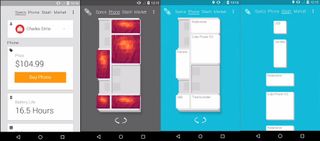
Note, for example, that you can pop in a camera module, a pedometer module, a thermometer, a USB module, and more. As you're configuring the device, you can keep checking to see how much your config will cost, depending on what you've added. When you're done, you can tap to check out. (In the onstage demo, the prototype threw up an error at that point. So it goes.)
Puerto Rico?
Easily the oddest announcement the Project Ara team made today is that the initial Market Pilot will take place in...Puerto Rico?
Yes, Puerto Rico. Google has its reasons, which it enumerated in a press release:

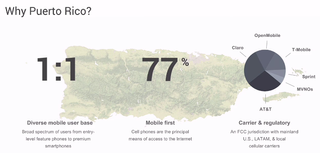
We're just speculating here, but it's also possible that Google saw Puerto Rico as a small market where it could effectively perform smaller, more controlled market research. It may also point to the final version of Project Ara as being something less for the tech elite and more for the average consumer.
The Market Pilot program in Puerto Rico will very much be a testing ground for the whole of the purchasing and delivery ecosystem. Customers can stroll up to food truck-type "stores" and configure an Ara phone (which might be the most hipster thing Google has ever done). Ingram Micro will handle all the logistics of delivering products to consumers and working with module makers, and the local carriers will be OpenMobile and Claro.
Looking Ahead To Spiral 3
In addition to getting the goods on the new Spiral 2 prototype, Google elaborated on what we can expect for Spiral 3.
There will be an inductive data connection on the phone so modules and the endo can communicate with no actual contact. There should be an option for a better battery, and a 4G/LTE option is coming. The endo itself should have antennas embedded in it in this spiral, too.
Rockchip should have a processor reference design in Spiral 3, and there should be an actual Android release on it, as well. It doesn't seem possible that any of the early Ara phones will run standard Android -- it just seems like the issues with modules communicating, hot swap functionality, and other hurdles would be too problematic. However, the Ara team was clear that it didn't believe in forking Android, so we'll just have to see how that plays out.
Spiral 3 should also see the Marketplace up and running, as well as MDK version 0.5.
This is all in addition to an impressive list of active Ara developers (more than 50 in total) that includes Toshiba, Marvell, Nvidia, Rockchip and more.
Project Ara is still far from an official launch, as evidenced by the exciting but still-clunky demos that the team showed onstage at the dev conference, but there is reason to believe that Google's ambitious modular smartphone project may become a Real Thing -- and maybe even by the end of the year.
Follow Seth Colaner@SethColaner. Follow us @tomshardware, on Facebook and on Google+.
-
Mike Friesen I am very excited to see how this turns out.Reply
In the early dev stages, I was hoping that it would be made real; Google was behind it, but the Google glass thing has kinda disappeared, and I figured this would too. But a roadmap with a release this year makes me think differently. Kudos, Google. -
bit_user I'm worried we're going to get a bunch of proprietary hardware modules that can only be used by proprietary apps. Someone please give me a reason to think otherwise.Reply
Also, what's the max bandwidth supported by UniPro or whatever bus they're using? I read about a GPU module, but it seems to me that the communication speed is probably much slower than that of GPUs integrated with the CPU. Same goes for RAM modules.
-
Merry_Blind I love this concept. Can't wait to get my hands on those phones. Hopefully they'll deliver. I trust in Google.Reply -
bustapr its a smart move to do this in PR. Since they are using two local carriers (claro is latin american, but its local in US) they have a contained environment for research. There will be less confusion, less people buying it from around the US trying to activate it on a big carrier. in short, less headaches and scams.Reply
Cant wait to see the hippie trucks in the area when they arrive xD -
plasmastorm This is the whole reason I'm still holding onto my HTC One X.Reply
Once this is released or shelved I'll get a new phone -
back_by_demand Back of the phone looks a bit like WP8 tiles, I can see the pictures on the parts aping to look like live tiles apps too.Reply -
RunLuke I have been skeptical since the first concepts and still am. There's a myriad if issues from technical ones to supply chain ones to consumer ones that I won't list and people here are probably already aware of.Reply
However I hope I'm proved wrong.
Most Popular


